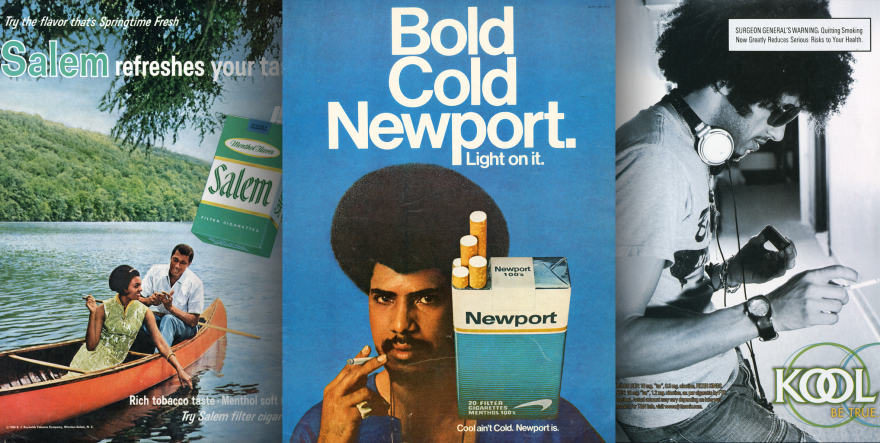As Columbus contemplates becoming the first city in Ohio to ban the sale of menthol cigarettes, data is starting to come in from areas that have implemented similar bans.
That includes the entire county of Canada, where researchers are finding a reduction in smoking they said would be even stronger in the United States because so many more smokers in the U.S. use menthol products than in Canada, largely the result of tobacco industry advertisements targeting Black people and young people.
Menthol is a chemical tobacco companies began adding to cigarettes broadly in the 1950s, used to mask the harshness of cigarettes in efforts to expand the base of smokers.
“It just makes smoking easier," said Michael Chaiton, a researcher and senior scientist at the Center for Addiction and Mental Health in Canada, where the sale of tobacco laced with minty flavors was fully banned in 2017.
He said, by design, menthol makes smoking more palatable by numbing the throat.
“When you take that away, for those who are relying on that essentially as a crutch, it makes it a lot easier for them to quit," Chaiton said.
The research is starting to prove that it in Canada.
“What we found essentially that in Canada, this was like a population-wide cessation program that affected all of the people who were smoking menthol cigarettes, and which is a smaller number than it would be in the US, but it was a substantial number. And those people who were smoking menthol, they were about twice as likely to try quit smoking," Chaiton said.
The researchers found cigarette sales decreased by 11% and Canadians who smoked menthol cigarettes quit smoking at a rate of 22%, compared to 15% of non-menthol smokers.
In Canada about 5% of smokers used menthols before the ban. But in the U.S., as many as 40% of smokers do, and most Black smokers use menthol cigarettes.
So, a menthol ban is projected to have a heavier impact in the United States' Black community, Chaiton said.
Columbus lawmakers said that is one of the driving factors in their pursuit of the ban.
Columbus Public Health Commissioner Dr. Mysheika Roberts said at a recent hearing about the proposed ban that about 60% of the 160,000 smokers in the city are Black and most smoke menthol. That's about a third of the city's Black residents, said Columbus City Councilwoman Shayla Favor.
Roberts said a ban on the sale of flavored tobacco could reduce health disparities and improve the health of Black people in Central Ohio.
“While we cannot stop everyone from using tobacco, we can remove the very products like menthol, and flavored products that target society's vulnerable people like Black and brown individuals and our youth, and get them hooked for life,” she said.
About 20% of adults in Ohio smoke, compared to about 15% nationwide. Only six other states have a higher rate of smoking, according to America's Health Rankings analysis of CDC data.
The higher rates are a contributor to Ohio's poor physical health and premature death outcomes, when compared to other states. Ohio is 39th in the country when it comes to premature death and 38th when it comes to physical health.
Under the bans, some smokers quit, some switch to menthol-free tobacco, some buy cigarettes online and some may turn to neighboring areas to buy the banned items.
A nationwide ban makes it harder for Canadians to just drive to the next city to buy menthols, but there are examples of local bans in the U.S. making an impact.
Studies show bans in New York City and Providence, Rhode Island led to significant drops in youth tobacco usage.
Jamie Long with the Public Health Law Center said the bans can hinder the creation of new smokers and save lives by helping adult smokers quit.
“Reducing the availability of cigarette products is going to reduce the prevalence of people using them. And certainly, that will vary in some particular locations, you know, if you live at the on the edge of a city, and then maybe isn't as much of a difference, but overall, it's, it's going to help in terms of reducing overall availability,” he said.
A study in Massachusetts after the state’s 2020 ban on flavored tobacco products that included menthol cigarettes showed a reduction in the sales of cigarettes in the state significantly trumped a slight increase in sales in neighboring states.
But the idea of an uneven marketplace has some Columbus store owners angry. At a recent council hearing discussing the possible ban, shop owner Abdul An Sur said his customers would just go elsewhere.
“If you pass this legislation, I will be at a competitive disadvantage and my adult customers will go and purchase their preferred products along with their gas, prepared food and grocery items," he said.
Still, public health experts argue the cigarette sales aren’t something that should be preserved over the lives of people hooked on nicotine, especially when most want to quit and the majority of people who don't will be killed by it.
“Menthol products themselves are harder to quit than regular tobacco unflavored cigarettes. So if you're able to take menthol products and other flavored products off the market, for the vast majority of smokers who do want to quit, this is going to help them do that," Long said.
Columbus City Council is expected to host more community meetings before voting on proposals before the end of the year.






